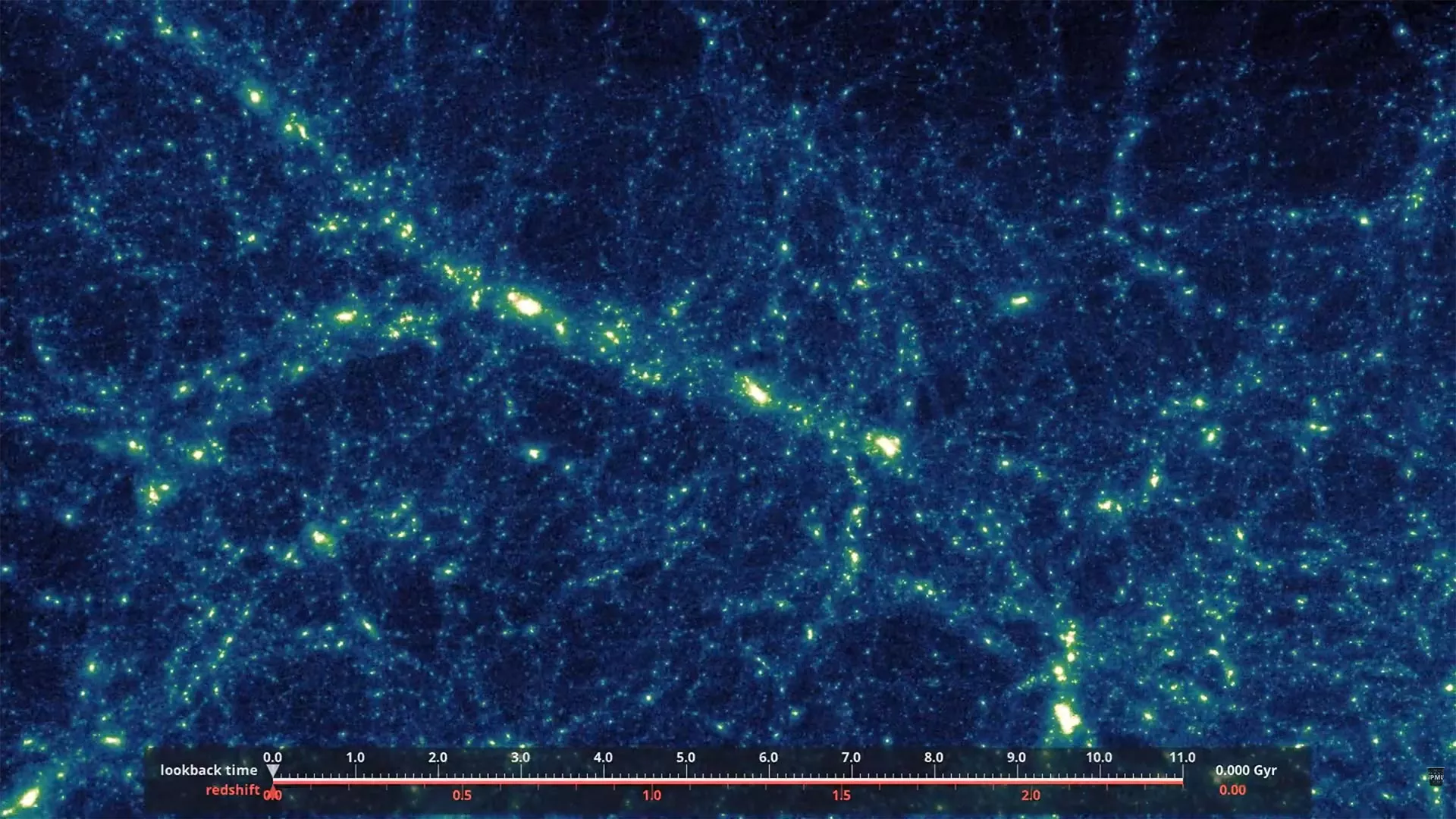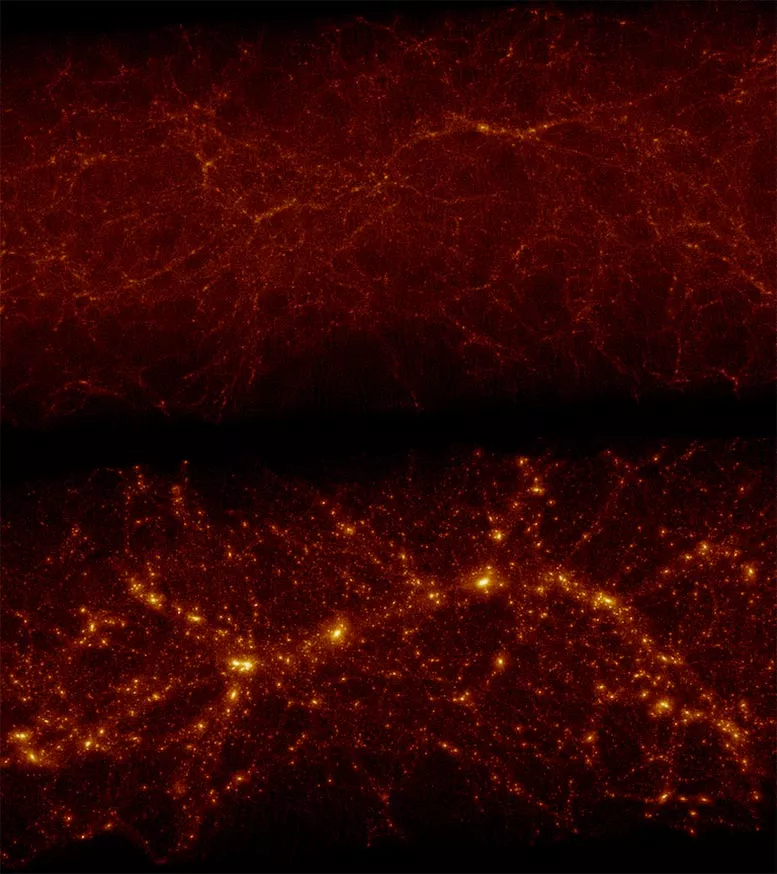
One way astrophysicists deal with this problem is to compare the evolution of different celestial bodies at different stages by observing them. In addition, they can effectively peep into the past by observing distant celestial bodies. For example, if we are looking at a celestial body 10billion light-years away, what we see is what it looked like 10billion years ago.
Now, researchers have created the simulation for the first time, thus directly reproducing the entire life cycle of some of the largest Galaxy collections observed in the distant universe 11billion years ago. The relevant research report was published in nature astronomy on June 2.
Cosmological simulations are crucial to the study of how the universe became what it is today, but many of them usually do not match what astronomers observe through telescopes. Most designs match the real universe only statistically. On the other hand, the restricted cosmological simulation is designed to directly reproduce the structures we actually observe in the universe. However, most of the existing simulations have been applied to our local universe, that is, near the earth, but have never been used to observe the distant universe.
A research team led by Metin ATA, a project researcher of the kafuri Institute of cosmic physics and mathematics and the first author of this new research paper, and KHEE Gan Lee, an assistant professor of the project, showed interest in distant structures such as protogalactic clusters of massive galaxies,. It is reported that these galaxy clusters are the ancestors of today's galaxy clusters before they could form clusters under their own gravity. They found that the current study of remote protogalactic clusters is sometimes too simple, which means that they are done with simple models rather than simulations.

"We want to try to develop a complete simulation of a truly remote universe to see how the structure starts and ends," ATA said
Their result is Costco (constrained simulation of cosmos field).
Li points out that developing this simulation is much like building a time machine. Because light from the distant universe has not reached the earth until now, the galaxies observed by the telescope today are a snapshot of the past. "It's like finding an old black-and-white picture of your grandfather and creating a video of his life," he said
In this sense, the researchers took snapshots of "young" ancestral galaxies in the universe, and then quickly advanced their ages to study how galaxy clusters would form.
The light from the galaxies used by the researchers reached us over a distance of 11billion light years.
The most challenging is to take the large-scale environment into account.
"This is a very important thing for the fate of these structures, whether they are isolated or associated with a larger structure. If you do not take the environment into account, you will get a completely different answer," ATA said. "We can consistently consider the large-scale environment because we have a complete simulation, which is why our predictions are more stable."
Another important reason for researchers to create these simulations is to test the standard model of cosmology, which is used to describe the physics of the universe. By predicting the final mass and final distribution of structures in a particular space, researchers can uncover previously undiscovered differences in our current understanding of the universe.
Their work has been applied to other projects -- including the study of the cosmological environment of galaxies and the absorption lines of distant quasars.
It is reported that their research details were published in nature astronomy on June 2, local time.